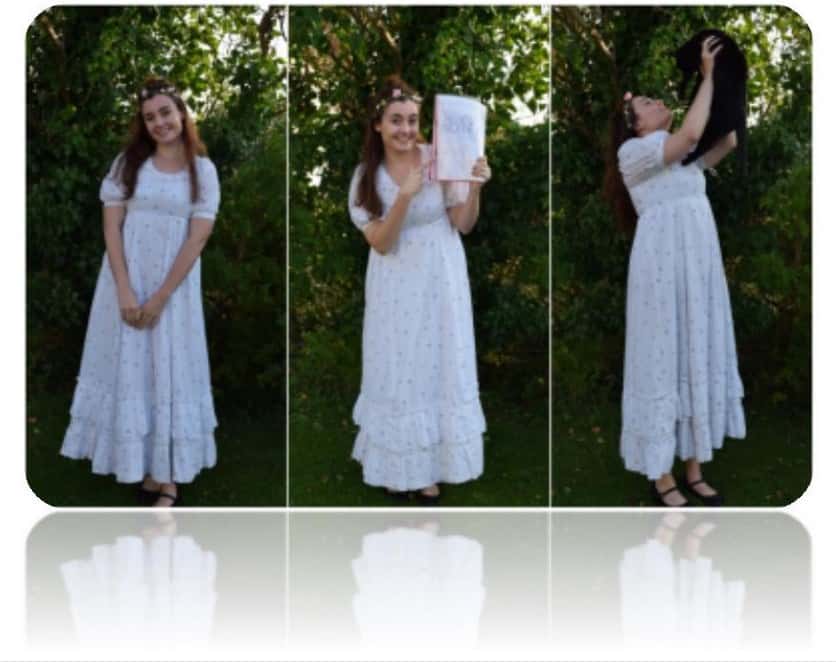Writing In Tough Times: Jane Austen in Bath and Southampton
Exclusive content by Rebecca Smith, author of The Jane Austen Writers' Club
One of the hardest things about writing is just keeping going. Lots of people can write well, but to finish a novel, receive rejections, keep on editing and revising and then do it all over again takes real stamina. Most published authors’ first novels aren’t their first novels at all. Lots of creative young people want to write but give up in their twenties or thirties when early success eludes them and life takes over.
Jane Austen could easily have given up, and at first glance it could seem that for a while she did. It’s easy to think that Jane Austen didn’t write much during her years in Bath and Southampton. We know from Jane’s letters and family recollections that she was at first horrified about the move to Bath but then became resigned and even looked forward to being in the city and spending summers at the seaside:
“I get more and more reconciled to the idea of our removal. We have lived long enough in this neighbourhood: the Basingstoke balls are certainly on the decline, there is something interesting in the bustle of going away, and the prospect of spending future summers by the sea or in Wales is very delightful. For a time we shall now possess many of the advantages which I have often thought of with envy in the wives of sailors or soldiers. It must not be generally known, however, that I am not sacrificing a great deal in quitting the country, or I can expect to inspire no tenderness, no interest, in those we leave behind.” (Letter to Cassandra, Steventon, Saturday, January 3rd 1801)
Jane, Cassandra and their parents moved to Bath in 1801, staying first with the Leigh-Perrots and then leasing 4 Sydney Place where they stayed (though with many trips to the seaside and to visit friends and relatives) until October 1804 when they moved to Green Park Buildings East. However after Mr Austen died in January 1805, the Austen ladies had to move twice within the city, each time to lodgings that were a little less pleasant. The periods they spent staying with relatives must have helped finances too. They finally left Bath in July 1806, and Jane later recalled how they’d felt: “It will be two years to-morrow since we left Bath for Clifton, with what happy feelings of escape!” (Letter to Cassandra, Godmersham: Thursday June 30th to Friday 1 July, 1808) After that they lived in Southampton with Frank and his family until the move to Chawton in July 1809.
Because Jane didn’t complete The Watsons during her time in Bath or Southampton, and because it wasn’t until she was happily settled at Chawton that she successfully revised Elinor and Marianne and First Impressions, it could easily seem that Jane wasn’t writing or doing much work during those years. Of course grief and being unsettled take their toll on writers as on everybody. Jane could easily have given up. We know that her father had sent First Impressions to Cadell and that it had been returned unopened.
There are no surviving records of other rejections or negotiations, but I can’t believe that they would try just one publisher for only one of her completed novels. After Elinor and Marianne and First Impressions, Jane wrote Susan (later Northanger Abbey) and began The Watsons. The Watsons was written on paper watermarked 1803, so must have been written in that year or quite soon afterwards.We also know that in spring 1803 Jane sold Susan to Crosby and Son for £10. Jane was actually very busy with her writing during her years in Bath. Prior to this, on June 11th 1799, Jane wrote to Cassandra:
“I would not let Martha read First Impressions again upon any account, & am very glad that I did not leave it in your power. She is very cunning, but I see through her design; she means to publish it from memory & one more perusal will enable her to do it.”
This was eighteen months after the Cadell rejection. Of course Jane was joking about Martha publishing First Impressions, but that still seems like the statement of somebody whose work has remained precious and current to her, despite it not yet finding a publisher. I think it also suggests that she wasn’t done with the novel, was still hoping to be paid for it and was thinking of what she would do to it before it was ready to go out into the world again. Jane was away from home when she wrote that letter so must have had the manuscript with her. We also know that the writing box Jane was given, most likely for her birthday in 1794, remained with her for her whole life and so it would have been with her when she lived in Bath and Southampton. Her work was always with her. During these tough, unsettled times Jane was still writing and aiming for publication. The difficult years between Steventon and Chawton were excellent for providing material too.  While I was working on The Jane Austen Writers’ Club I thought a lot about Jane’s Bath and Southampton years and how they contrasted with her years in Hampshire. As well as talent (in Jane’s case, genius) writers need great resilience and determination. She had both. The way that she kept going through the tough times is inspiring. Jane Austen set an excellent example for aspiring authors to follow.
While I was working on The Jane Austen Writers’ Club I thought a lot about Jane’s Bath and Southampton years and how they contrasted with her years in Hampshire. As well as talent (in Jane’s case, genius) writers need great resilience and determination. She had both. The way that she kept going through the tough times is inspiring. Jane Austen set an excellent example for aspiring authors to follow.
As well as looking at Jane’s methods, advice on writing and the way she tackled aspects of the craft (plotting, characterisation, dialogue, setting and so on) my book is about the way that she lived her life and what it was about her attitudes, her habits and the decisions she made that helped her to succeed. I’ve also used what I learned during the hundreds of happy hours I spent at Jane Austen’s House Museum where I was lucky enough to be the writer in residence. I love to visit places that were important to Jane. I live in Southampton (there’s much more to the city than the stinking fish mentioned in Love and Freindship) and I often visit Bath which is an easy train ride away. My daughter and I were once lucky enough to be the only people on one of the excellent guided tours ofJane Austen’s Bath.
It’s so inspiring to see the locations that feature in Jane’s novels and to visit places that she knew so well. We can learn so much by following in Jane’s footsteps. I hope The Jane Austen Writers’ Club will be an enjoyable read for other writers and help them to do that too.
Bibliography Le Faye, Deirdre Jane Austen’s Letters. Fourth Edition. (Oxford University Press, Oxford. 2014.) Le Faye, DeirdreJane Austen: A Family Record (Cambridge University Press, Cambridge. 2004) Sutherland, Kathryn Jane Austen's Textual Lives: From Aeschylus to Bollywood (Oxford University Press, Oxford. 2007)
Rebecca Smith’s most recent book is The Jane Austen Writers’ Club: Inspiration and Advice from the World’s Best-Loved Novelist (Bloomsbury, 2016). She is also the author of three novels: The Bluebird Café, Happy Birthday and All That and A Bit of Earth (all Bloomsbury) and Jane Austen’s Guide to Modern Life’s Dilemmas which has been published around the world. From 2009-2010 she was the Writer in Residence at Jane Austen’s House Museum in Chawton. She teaches creative writing at The University of Southampton.




Leave a comment
This site is protected by hCaptcha and the hCaptcha Privacy Policy and Terms of Service apply.